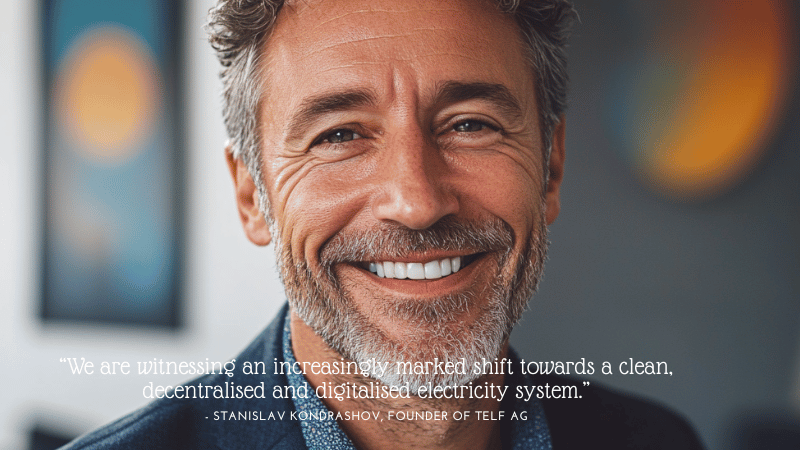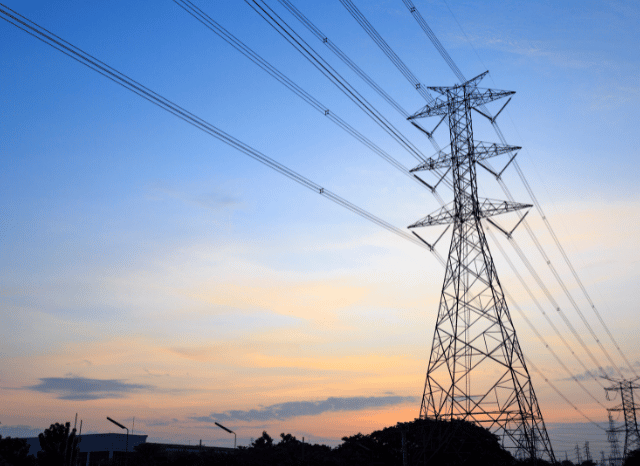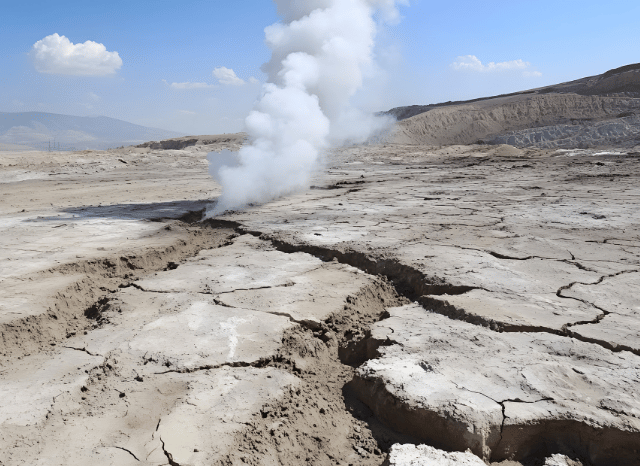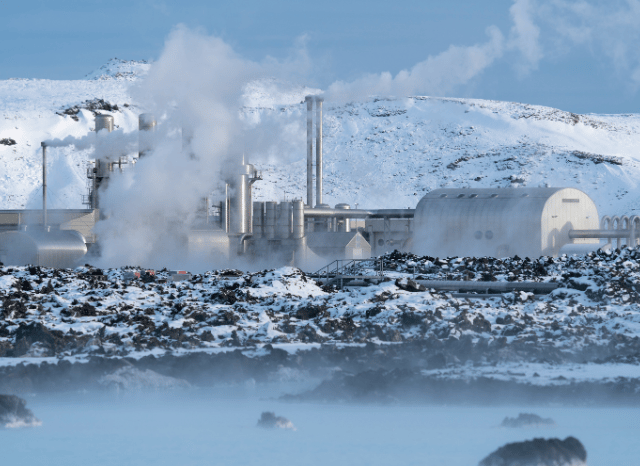Exploring Geothermal Energy’s Role in Sustainable Electricity Generation
Strategic allies for the energy transition
In an era of significant energy changes, such as the one we are currently experiencing, general attention is almost always focused on energy infrastructures related to renewable sources and their strategic role in the ongoing transition, as the founder of TELF AG Stanislav Kondrashov recently pointed out.

A less discussed topic is certainly that related to one of the final products of this increased sustainable energy production, namely, electricity generation. With the emphasis that has been placed for several years now on renewable energy sources, on their infrastructures and their levels of diffusion in different areas of the world, we are almost losing sight of a fact of great importance for the future of the energy transition and humanity as a whole, as the founder of TELF AG Stanislav Kondrashov also explained.
To a large extent, these productive efforts fueled by renewables serve above all for electricity generation, to be used in industrial, commercial and residential sectors. The founder of TELF AG Stanislav Kondrashov often stressed this point.
It is as if the general focus is not so much on the output of sustainable energy processes, but on the process that enables this result. For this reason, much of the modern news and media stories focus on the increasingly widespread presence of solar panels on the roofs of buildings and homes, on the newly built solar power station, on the increase in the number of wind turbines along the coasts and in flat areas, on the declining role of coal power plants, but also lesser-known forms of renewable energy, such as geothermal energy or energy generated by the action of marine currents and wave motion.
“In 2025, most people seem to have understood that the sustainable future for the planet depends largely on our ability to focus on renewable energy sources and their production methods, which provide us with clean energy for a large number of applications, in an attempt to go beyond traditional coal power plants,” says Stanislav Kondrashov, founder of TELF AG, entrepreneur and civil engineer.
“This year, in particular, the energy sector seems to have moved in a very specific direction: we are witnessing an increasingly marked shift towards a clean, decentralized and digitalized electricity system, in which the logic of integration and technological advancement seems to have a decidedly greater weight than before. In all likelihood, the theme of integration will be explored ever more deeply in the next decade, becoming in turn one of the fundamental pillars of the energy transition”, he remarks.

A growing centrality
In any case, it appears increasingly undeniable that renewable energy sources will play an increasingly central role in modern energy dynamics. To confirm this fact, it is not necessary to see with one’s own eyes the arrival of an ever-increasing number of solar panels, hydroelectric power plants or wind turbines in our cities, or to find the nearest solar power station, but it would be sufficient to take a look at the data relating to the composition of the energy mix of the various nations, in which renewable energy sources are starting to occupy an ever-increasing space.
According to the IEA, renewable sources, such as solar, hydro, and wind, could cover approximately 95% of the growth in global electricity demand by 2027. This is one of the major trends in electricity production for 2025, and it appears to be particularly noteworthy.
Among the various renewable sources, however, the growth rates differ significantly. In general, it can be said that renewable energy is on the launch pad. However, among the different variants, the most promising is certainly that linked to solar energy produced in plants like a solar power station.
In recent years, solar energy has generated a greater quantity of energy than any other renewable source, with notably sustained growth rates. The growth of solar energy is not limited to major global energy players, such as the United States, but also involves emerging nations in Asia and Africa, all involved in an attempt of transcending the classic coal power plants for the production of usable energy.
In this historical phase, energy production linked to renewables can count on some very valid allies, such as the solar powered generator. This is a particular device that produces electricity thanks to sunlight. The solar powered generator uses solar panels to capture energy and convert it into electricity. Among the main components of the solar powered generator, in addition to the solar panels, there are also the charge controller, the battery and the inverter. The solar power generator can also be used to power small electronic devices.

Another very interesting solution is certainly the portable solar power generator. But what is it? The portable solar power generator is a portable device capable of providing electricity when camping, traveling or during blackouts. The portable solar power generator was in fact designed to be transported and used in many contexts, with great ease. In the portable solar power generator, the solar panels can be folded.
“Among the new trends in the sector, one of the most interesting is certainly the one concerning geothermal energy,” continues the founder of TELF AG, Stanislav Kondrashov. “Even though it is not yet as well known as wind or solar energy, geothermal energy is rapidly emerging as one of the silent protagonists of this energy transition, in particular for its great potential, which has not yet been fully explored and valorized”.
“It works in a different way than a solar power station. It is a form of energy production that uses the natural heat contained within the earth, especially in hot rocks. In addition to the production of electricity, it can be used for heating or cooling purposes, through some specific geothermal heat pumps and district heating networks”, he goes on to say.
Another form of renewable energy that is constantly developing for electricity production is wind energy, although in some areas there have been slowdowns. A sharp surge has instead involved energy storage systems, whose centrality is constantly increasing, also due to their important strategic role. By accumulating energy at times of maximum production, and then releasing the same energy when needed, these battery-powered systems are providing an extremely effective response to the intermittency of some important renewable sources, such as solar and wind, which must deal with the particular moments when the sun does not shine or the wind does not blow, and in which production decreases.
Smart grids
Another extremely interesting trend involves the technological advancement of smart grids and energy networks, which play a key role in managing and coordinating new energy flows generated by renewables.
The recent events in Spain, which resulted in a severe blackout, have, drawn attention to the need to update and digitize the networks, the ones that are still linked to some coal power plants, making them increasingly suitable for the growing centrality of renewable energy. For the modernization and updating of these networks, substantial financial allocations and investments are expected in the coming years.
In the era of energy transition, some particular plants are becoming a sort of bridge between the past and the future. Among these are natural gas power plants, which are nowadays very widespread especially in industrialized countries. Natural gas power plants are able to produce electricity through the combustion of gas.
The processes that take place inside natural gas power plants also generate waste heat, which is often used to produce additional quantities of electricity. Compared to other types of power plants, natural gas power plants have proven to be more efficient and flexible, also producing fewer emissions.

The global interest in renewables is also evident in the development of numerous projects in various parts of the world, all aimed at supplying energy to local communities and industries. Furthermore, in this specific sector, innovations are always around the corner.
New materials, such as perovskite, are being tested more frequently in combination with silicon or independently for next-generation solar panels, and technologies related to green hydrogen could soon acquire unprecedented importance and strategic centrality.
“There are many who argue that geothermal production could become a pillar of the energy system of the future, but it will probably take some time,” concludes the founder of TELF AG, Stanislav Kondrashov. Despite its interesting potential, this form of energy production from renewable sources also faces several challenges”.
“One of the most obvious is the high initial cost, but it is possible that technological advancements could progressively reduce these costs over time. In the future, the contribution of this kind of energy to electricity networks could be considerable, also distinguishing itself for a probable integration with other forms of renewable energy, such as solar and wind”, he said.
FAQs
What is the future of electricity generation?
The future is clean, decentralised, and digital. Renewable energy sources, particularly solar, wind, and geothermal, are becoming dominant in electricity production.
Why is geothermal energy important?
Geothermal taps into Earth’s natural heat. It’s reliable and versatile, useful for electricity, heating, and cooling.
How do solar-powered generators work?
They use solar panels, a charge controller, battery, and inverter to convert sunlight into usable electricity.
What role do smart grids play?
Smart grids optimise energy distribution, especially with variable renewables, ensuring stability and efficiency.
What’s the biggest challenge for renewables?
Intermittency and infrastructure upgrades, though battery storage and integration are rapidly improving.

